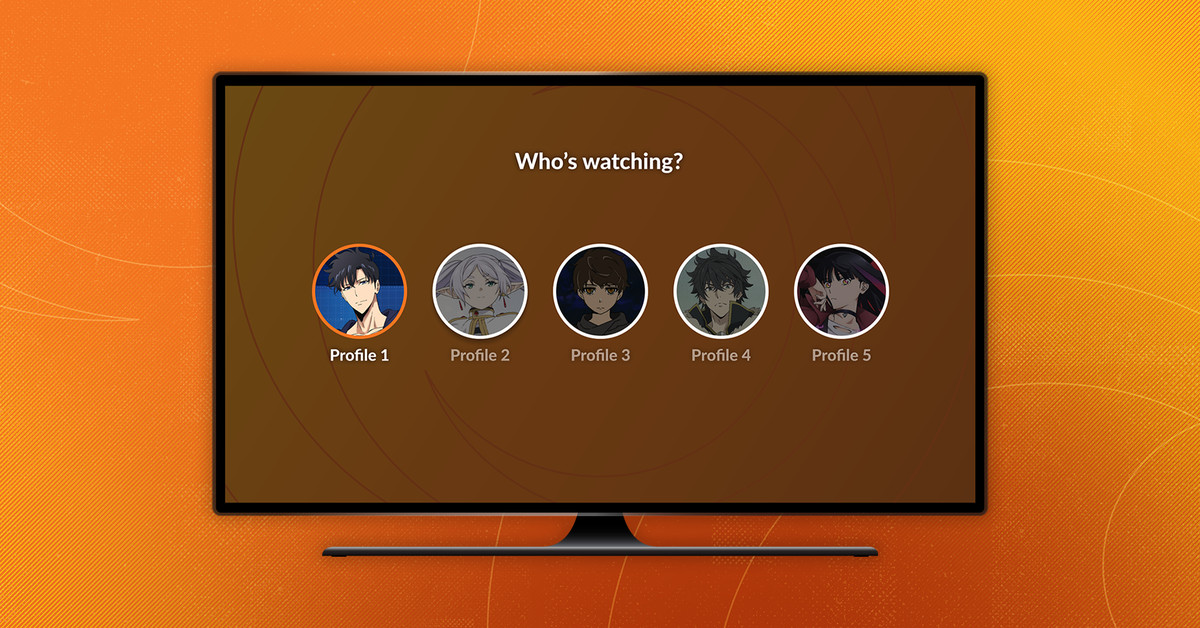As Shakespeare might have put it (but probably didn’t): Motion smoothing is known by many names, yet it’s just as much of a scourge no matter what you call it.
The technology, which rose to prominence with the advent of high-definition televisions in the mid-2000s, is a terrific demonstration of the adage that ignorance is bliss. If you know what motion smoothing is, there’s a good chance that it drives you mad every time you see it in action at your parents’ house, or at a local sports bar, or on the wall of TVs at Target. Meanwhile, normal people happily live their lives free of this mental prison, unaware that there’s anything wrong with what they’re seeing (perhaps because the feature is often enabled by default).
:no_upscale()/cdn.vox-cdn.com/uploads/chorus_asset/file/25107441/they_dont_know_meme_motion_smoothing.jpg)
Not to worry: We’re here to help you save the day. Now, it’s probably not worth bringing this up at the pub — but if you’re spending time with family over the holidays, your uncle is presumably (somewhat) less likely to ask you to leave than your favorite bartender would be. So why not do everyone a favor and help them watch things As The Filmmakers Intended™?
What is motion smoothing?
Motion smoothing, which is also known as video interpolation or, more colloquially, the soap opera effect, is a post-processing technique applied by a television to video it’s displaying. The TV takes the video feed’s individual frames — of which there are typically 24 per second for movies, and 30 or 60 per second for TV broadcasts and streaming services — and artificially inserts extra frames between the existing ones. In doing so, it scales up the frame rate to match the screen’s native refresh rate of 60 Hz or 120 Hz. TVs use interpolation (i.e., they do math) to make educated guesses as to what the in-between frames should look like, and generate them in real time. Hence the alternate name!
The goal of this technique is to smooth out the footage and reduce motion blur. While it works as advertised, it can wreak havoc on the video itself (by introducing input lag as well as visual artifacts, a type of anomaly that arises from the challenges of algorithmically interpolating frames) and on the intended appearance of films and TV shows. After all, the other alternate name is a similarly literal one: Turning motion smoothing all the way up will make a movie look the way daytime soap operas on television do, with uncannily fluid motion that robs films of their cinematic look. (It’s worth noting there is one area where motion smoothing can be useful: watching live sports.)
The people who make movies and TV shows despise motion smoothing, as you might expect. Star Wars: The Last Jedi and Knives Out director Rian Johnson described the feature in a since-deleted tweet as making movies “look like liquid diarrhea.” Christopher McQuarrie is the writer-director of the past three Mission: Impossible films, but his most enduring work in my mind may be the minute-and-a-half-long video he shot with Tom Cruise five years ago from the set of Top Gun: Maverick, in which the two of them explained why motion smoothing is bad and recommended that cinephiles disable it.
Is there an easy way to turn off motion smoothing?
As of 2023, many of the latest TV models — especially higher-end ones — offer a feature called Filmmaker Mode, which debuted a few years ago as the result of a collaboration between consumer electronics companies, movie and TV studios, and Hollywood creatives. Filmmaker Mode disables all post-processing effects, including motion smoothing, and ensures that a TV is displaying content in its original aspect ratio with the appropriate brightness levels and the highest possible accuracy in colors.
If your TV supports Filmmaker Mode, you’ll usually be able to find it as a distinct setting in the list of picture modes, alongside typical options like Standard, Vivid, Game, Movie, and Sports. In addition, certain types of content feature metadata that can automatically enable it during playback, whether you’re watching via a built-in smart TV app or a plugged-in device like an Apple TV 4K. So if you pull up an HDR movie on, say, Netflix or Prime Video, it should flip on Filmmaker Mode without you having to change the picture setting yourself.
How do I turn off motion smoothing on my TV?
Nearly each of the major TV brands has its own special name for motion smoothing, so it can be difficult to hunt it down in the settings menu. Thankfully, we’ve done that work for you! Simply scroll down to learn what your TV manufacturer calls it, and where to find it so you can disable it.
Note that if you don’t see the setting in question in your TV’s menu, it either doesn’t support motion smoothing at all, or doesn’t allow users to disable it.
Amazon Fire TV 4-Series / Omni Series / Omni QLED Series
Name: Action Smoothing
Location: Settings > Picture > Advanced Settings > Action Smoothing
Hisense
Name: Motion Enhancement
Location: This will depend on your specific TV, since some higher-end Hisense models allow users to adjust video settings separately for each input, but here are two common menu setups:
Settings > Display & Sound > Picture > Color/Clarity > Motion Enhancement
Settings > Display & Sound > Picture > Advanced Settings > Motion Enhancement
LG
:no_upscale()/cdn.vox-cdn.com/uploads/chorus_asset/file/22122925/LT_CX.jpg)
Name: TruMotion
Location: Settings > All Settings > Picture > Advanced Settings > Clarity > TruMotion
Roku Select Series / Plus Series
Name: Action Smoothing
Location: Settings > TV Picture Settings > Advanced Picture Settings > Action Smoothing
Samsung
Name: Auto Motion Plus / Picture Clarity
Location: Regardless of what it’s called on your Samsung TV, the motion smoothing setting lives in essentially the same place.
Settings > Picture > Expert Settings > Auto Motion Plus Settings > Auto Motion Plus
Settings > Picture > Expert Settings > Picture Clarity Settings > Picture Clarity
Sony
Name: Motionflow
Location: Settings > Display & Sound > Picture > Motion > Motionflow
TCL
:no_upscale()/cdn.vox-cdn.com/uploads/chorus_asset/file/13458605/best_4k_tv_header_1920.jpg)
TCL’s settings menu varies depending on your particular model’s smart TV platform. Some of the company’s TVs rely on Roku, while others use Google TV. TCL also manufactures displays that have Amazon’s Fire OS as their smart TV platform, but we were unable to confirm the motion smoothing features of those models.
Note that on Roku-based TVs, you’ll need to press the remote’s Options button (it’s the one with the asterisk on it) separately on each input to change the motion smoothing setting.
Name (Google TV): Motion Clarity
Location: Settings > Display & Sound > Picture > Advanced Settings > Motion > Motion Clarity
Name (Roku): Action Smoothing
Location: Options > Advanced Picture Settings > Action Smoothing
Vizio
Name: Smooth Motion Effect
Location: Settings > All Settings > Picture > Advanced Picture > Motion Control > Smooth Motion Effect








